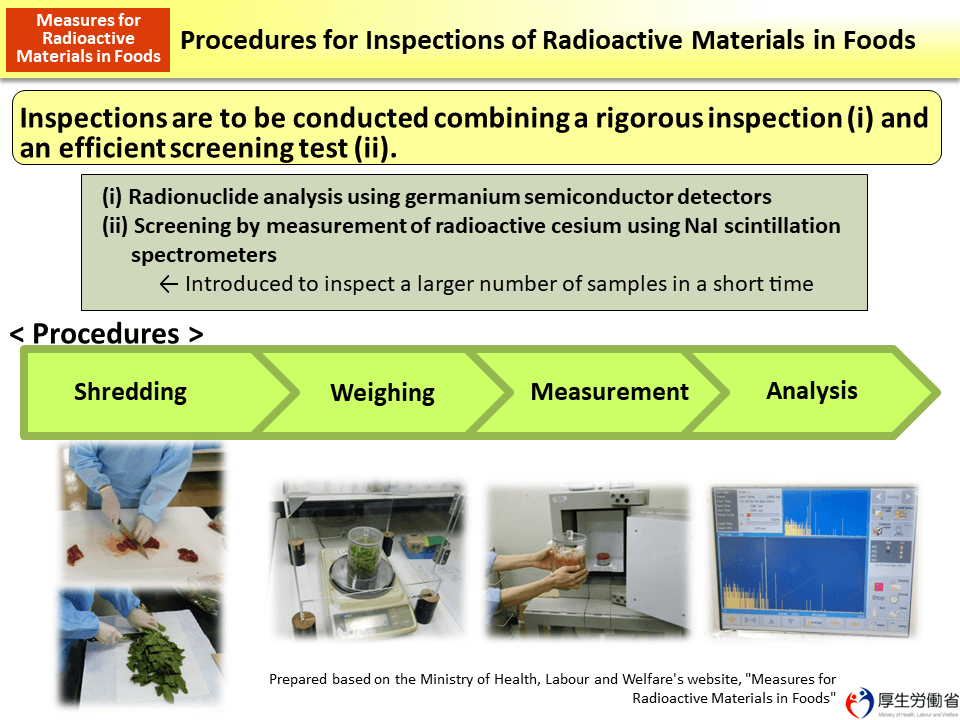Procedures for Inspections of Radioactive Materials in Foods
This figure shows procedures for inspections of radioactive materials in foods.
There are two ways to inspect foods, i.e., a rigorous inspection and an efficient screening test.
As a rigorous inspection, radionuclide analysis is conducted using a germanium semiconductor detector. After shredding a food sample, its weight is measured accurately. Then, the shredded sample is put in a prescribed container. The container is set in a detector, which is structured like a box covered with a thick layer of lead, and the amount of radioactive cesium is measured. Lastly, measurement results are analyzed.
For an efficient screening test, a NaI (TI) scintillation spectrometer is used. A NaI scintillation spectrometer is inferior to a germanium semiconductor detector in terms of measurement accuracy, but can shorten the time required for inspections and is less expensive. If the measurement using a NaI scintillation spectrometer suggests the existence of radioactive cesium exceeding the standard limits, an inspection is conducted again using a germanium semiconductor detector.
- Included in this reference material on March 31, 2013
- Updated on March 31, 2017

